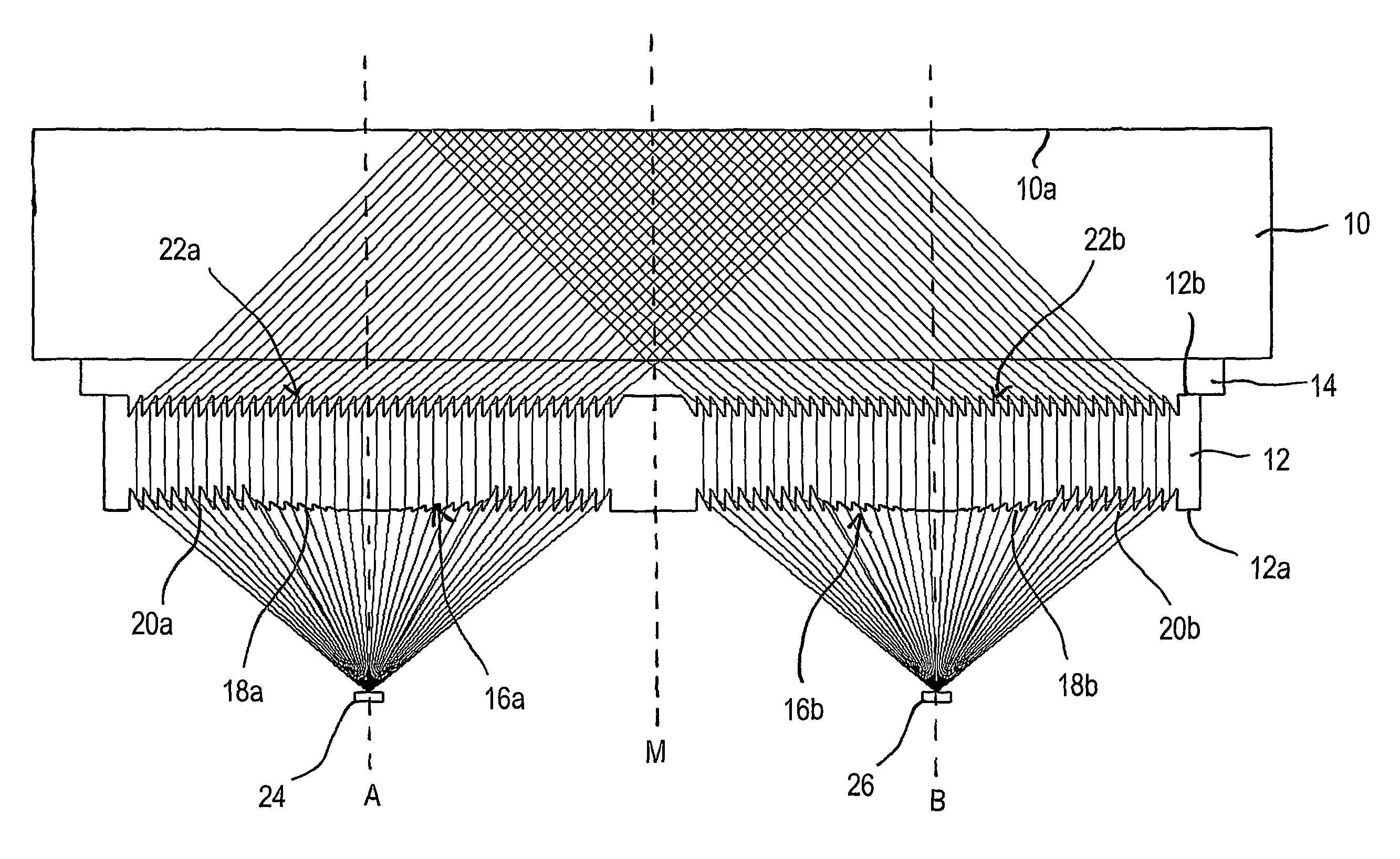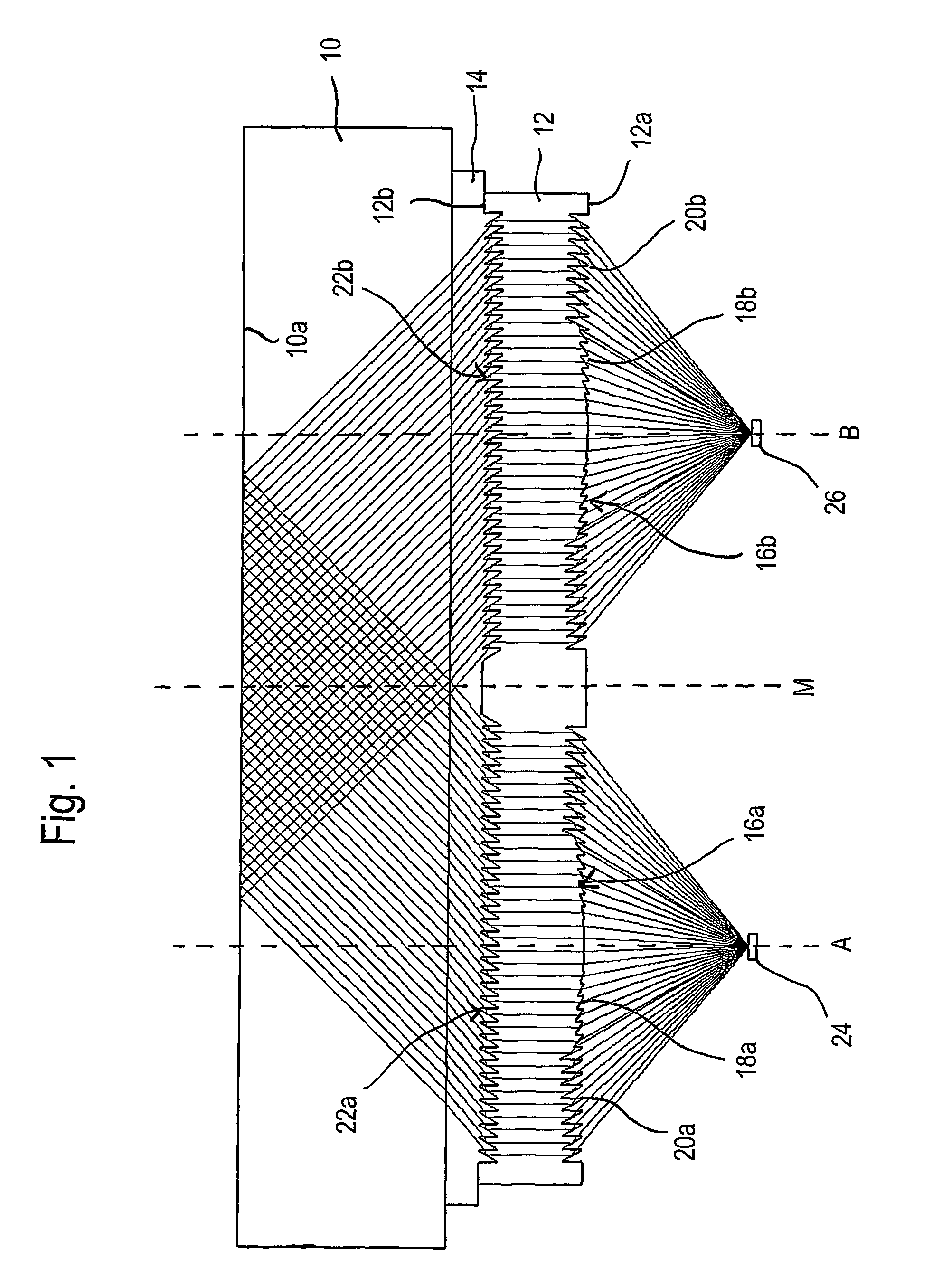Optical sensor device
a sensor device and optical sensor technology, applied in the direction of optical radiation measurement, vehicle cleaning, instruments, etc., can solve the problems of reducing the useful luminous efficiency of the device, requiring a large amount of space, and reducing the useful luminous efficiency and sensitivity to stray light, so as to achieve excellent directional effect and minimal space requirement
- Summary
- Abstract
- Description
- Claims
- Application Information
AI Technical Summary
Benefits of technology
Problems solved by technology
Method used
Image
Examples
Embodiment Construction
[0018]A rain sensor is typically comprised of two identical optical sensor units. A sensor unit of this type is schematically illustrated in FIG. 1. The sensor unit is attached to the windshield 10 of a motor vehicle. The optically active element of the sensor unit is a lens plate 12. The lens plate 12 is optically coupled to the windshield 10 by means of a coupler layer 14.
[0019]On a first surface 12a facing away from the windshield 10, the lens plate 12 is provided with two identical Fresnel structures 16a, 16b, which are arranged at a small distance from each other. Both Fresnel structures 16a, 16b are designed to be rotationally symmetrical with respect to an axis A and B, respectively. The Fresnel structures 16a, 16b may be divided into an inner part and an outer part, the outer part having a larger radial distance from the axis A or B than the inner part. The inner part constitutes a Fresnel lens structure 18a and 18b; the outer part constitutes a Fresnel reflector structure 2...
PUM
 Login to View More
Login to View More Abstract
Description
Claims
Application Information
 Login to View More
Login to View More - R&D
- Intellectual Property
- Life Sciences
- Materials
- Tech Scout
- Unparalleled Data Quality
- Higher Quality Content
- 60% Fewer Hallucinations
Browse by: Latest US Patents, China's latest patents, Technical Efficacy Thesaurus, Application Domain, Technology Topic, Popular Technical Reports.
© 2025 PatSnap. All rights reserved.Legal|Privacy policy|Modern Slavery Act Transparency Statement|Sitemap|About US| Contact US: help@patsnap.com



